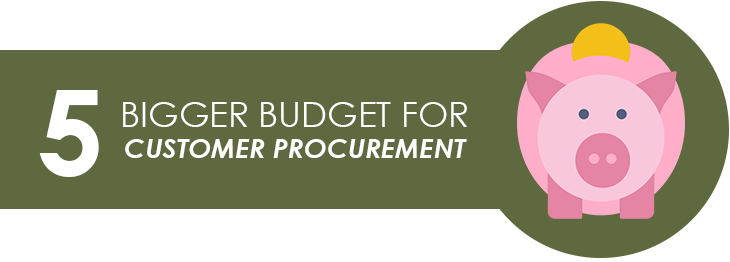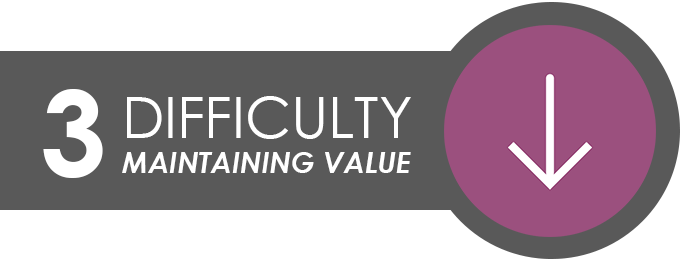Business
Is A Subscription Model Right For Your Business? Pros vs Cons
Dodd Caldwell
July 21, 2020

In a world that is becoming increasingly digitized, it’s funny to see that one of the fastest growing and most popular business models of our day employs that good old fashioned method of delivery: subscriptions.
If you’re wondering to what we’re referring, it’s subscription service based business models. Which is just a long way of referring to some of the most popular services out there: think Netflix, Spotify, Birchbox, and Stitch Fix, to name just a few.
The main idea is this: rather than provide services or goods and charge for each item individually, you charge for a subscription, and members get regular deliveries of your product without the hassle of repeated searching or ordering.
Subscription based business can be very successful, but is it the right idea for your business model? We’ve compiled a comprehensive list of pros and cons to help you decide if this is a route that might work for you.
Pros

Predictable Income
Perhaps one of the immediate benefits of a subscription model is that your company’s income can be pretty well predicted on a month to month basis. Unlike a site that sells hundreds or thousands of items that have ebbs and flows of popularity depending on a variety of factors, subscription services sell a single product that is guaranteed to the buyer, and in return, the buyer guarantees their payment.
There is an upfront cost of trying to reach and win over new customers (as with all businesses), but once those customers are in and have signed up for your service, you can predict revenue for months in advance and breathe a little sigh of relief.

Good Customer Relationships
With most sales, it can be difficult to engage and develop relationships with customers, simply because they often make a one-off purchase and you may not know if you’ll see or hear from them again.
Because of the monthly nature of subscription services, you have an extended period of time to develop a relationship with your customer. This means you can learn what they value and what they’d like to see change. Their feedback can allow you to further improve your model and retain customers for the long term.
An added bonus of this is that word-of-mouth is an important way to increase business in this social media driven age, and customers who love products that they purchase online are far more likely to share those products with friends and followers.
Good Vendor Relationships
Subscription services like Birchbox, Graze, or Stitch Fix send you a single box each month, but in reality they are sending you a variety of ever changing products that come pre-packaged in that single box.
For subscription services that send samples from various vendors like this, one of the huge pluses is the relationship that is developed with vendors. This is good news for the subscription service AND the vendor.
The vendors receive the automatic marketing platform that comes with your product being delivered straight to someone’s doorstep each month. For the company offering the subscription, there is the good publicity of the vendor selling their product through that company, as well as the potential for an ongoing relationship with an ever-changing stream of products to offer.

Potential for Untapped Markets
One of the things that has opened the door for such success for subscription providers is that it has enabled companies to consider and pursue untapped markets.
Take Netflix, for example. The company forever changed the way movies and shows could be rented and watched when they saw how limited the movie rental store concept was. Due dates, late fees, and hefty prices per movie all became a thing of the past when Netflix turned DVD rentals into a subscription service in the early 2000s.
Where there’s a gap, or where something is being done poorly, there is probably an market just waiting to be tapped.

Bigger Budget for Customer Procurement
Because a subscription service is based on the idea of selling one idea, and getting that idea to stick on a month-to-month basis, the initial budget for reaching and procuring new customers can be somewhat larger than it would be with more traditional business model.
Where you might normally be looking to spend funds on product marketing and building complex systems for all of the various aspects of your business, you can be a little more singularly focused on targeting certain audiences and building customer base as you begin your subscription service.

Lower Budget for Customer Retention
Conversely, because of the nature of subscription services, you can spend far less on customer retention. Although it’s true that you need to focus on making sure your customers continue to be pleased with your product, they are guaranteed return spenders, rather than requiring constant marketing and encouragement to come back and purchase again.
It’s important to remember, though, that just because there’s greater confidence in customer retention than with more traditional business models, it doesn’t guarantee that customers will stay forever. This will depend on customers continuing to be satisfied, but more on that later.

Avoid the Hassle of Market Ebbs and Flows
One of the frustrating things about marketing and selling a product or service that sales often depend on outside factors. Maybe you double your profits on Black Friday, but you triple your losses in June every year, just based on what you sell and when it’s popular.
These sorts of frustrating variables are pretty much a moot point with subscription services. Your sales aren’t really dependent upon external forces, such as market change or time of year. In fact, if you take a company like FabFitFun, for example, you can actually tailor your box to the season of the year, while continuing your steady income, and avoid any extra cost of marketing the new products.
Cons

Risk of High Churn
Churn, or cancellation, is one of the biggest risk of subscription service based companies. While it’s true that there is some reliability for your income when a customer signs up, what’s going to keep them interested, and more importantly, what’s going to prevent them from cancelling when they decide it’s not worth the monthly fee?
Fabletics, Kate Hudson’s popular athletic wear company, came under scrutiny as customers complained about how difficult it was to cancel, and how much work it was to keep from getting charged for clothing they didn’t want.
So while it’s important to anticipate this risk, it’s also important to develop a good reputation with customers regarding how you handle things such as cancellation and extra fees. Churn is always a risk, but you don’t want to add fuel to the fire by having negative interactions with customers.

Contract Nerves
From cable service to gym memberships, signing a contract can make people a little skittish. There’s the danger of realizing you’ve agreed to something you don’t end up wanting. There’s the risk of not having the money you thought you’d have to cover it. For a variety of reasons, people can be very contract averse.
Because of this, it can be hard to sell customers on subscription service. It feels like a huge commitment to, for example, pay monthly for craft coffee, when you can pick up a bag from the grocery store without pledging your undying love for the brand.
This is why the front end customer procurement budget is important – you’ve got to convince your audience that it’s worth the commitment, and will improve their life enough that it’s worth the extra cost.

Difficulty Maintaining Value (Loss of Interest)
To look at the cable service example again, we’ve all been in that place of looking at our cable bill and thinking, “I don’t even watch any of these channels!” This, of course, is one of the attitudes that has contributed to the success of such subscription services as Netflix and Hulu. However, those companies run into the same obstacle: how do we keep our customers interested?
This is a hurdle that subscription service business owners should anticipate. If your product gets old, or can be replaced by something cheaper and easier, the novelty will wear off. Services like Birchbox or FabFitFun keep customers excited by including new products every month.
You’ll want to think of how your service can do the same, shaking things up to keep customers from getting bored and moving on.

Singular Vs. Varied Products
Like we’ve already said, a product can become dull if it doesn’t change every month. If someone has the sense that they are just receiving the same old thing in the mail every month, as with, for example, the dollar shave club, will they just lose interest and move on?
With services like Amazon Prime and Netflix, new shows and movies are added and removed each month, making them more of an exciting commodity. Trunk Club promises to reinvent your wardrobe and to continue to invest in your changing sense of style over time. Graze offers new and exciting snacks every month, exposing you to an ever growing world of organic and healthy snacks.
Even if you offer a single product, you can take any number of approaches to making sure that service remains unique, and worth a customer’s investment.
Small Hiccups Become Big Problems
With a monthly subscription service, all of your customers are getting the same thing, every month, at about the same time. This simplifies, for the most part, but can make things extra stressful if you run into any hiccups.
A small glitch in the system could mean you get behind on every single order at once. And if you miss a week, customers get their orders too close together, rather than spaced out over a month.
Because of this risk, it’s important to anticipate and have a plan for any potential problems that could cause things to snowball. London Tea Club, for example, stays on top of monthly billing by using MoonClerk.

Avoiding Fads
Lastly, subscription services are susceptible to gaining and losing interest from customers if they aren’t careful to avoid embracing a fad.
As this article even states in the title, a subscription service can be an attempt to make the most of a current cultural fad while it lasts. That’s all well and good, but as a business owner, you have to be wary of the pitfalls of investing in a passing craze.
Conclusion
Are subscription based sales the right choice for you? Ask yourself the following questions:
- Does my product or service hold more value if offered on an ongoing, regular schedule?
- Do I have the front-end capital to invest in customer procurement?
- Is my product susceptible to declining interest due to changing fads?
- Are there vendors I could work with to make my service or product more varied and interesting?
With a little strategy and planning, a subscription based model might be a great option for you!




